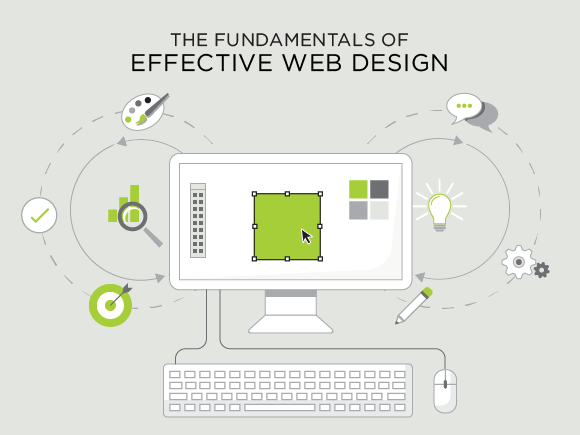
7 Effective Web Design Fundamentals You Must Know
Web Design Fundamentals – Basic Web Design Principals
Table of Contents
The design of a website is not only a good eye-catching tool but it plays a vital role in improving the conversion rate. Development professionals, as well as website owners, must know about web design fundamentals that are the key to create effective interfaces. A well-planned and executed layout boosts user engagement and encourages them to take desired conversion actions. A Canadian e-commerce operator hired a firm known for responsive website design in Vancouver. The agency created an interface that was easy to navigate and helped visitors find the products they were searching quickly. This helped the business generate good sales and establish itself in the domain quickly. Let’s take a look at the basics of web design which helped the Canadian firm create an effective interface.
1. Establish A Visual Hierarchy
One of the most basic and important principles of web design is to establish a visual hierarchy in the layout. It is essential to identify the most important elements of a website and then order them accordingly. This helps in drawing the visitor’s attention to the vital areas quickly. The key elements can be made more prominent not only by increasing their size but also by using bright colors or contrasting shades.
2. Identify The Correct Dimensions Of Vital Elements
Another important aspect of website design is identifying the correct dimensions of the important elements. Users must be easily able to target call to action buttons or the navigation links in the website’s footer. The increasing usage of smart devices makes it necessary to ensure that the elements are sized keeping human thumbs and fingers in mind.
3. Leave Enough White Space
The white space also called the negative space is one of the most important web design fundamentals. All the blank area on a page which helps differentiate between different sections or elements helps lay the visual hierarchy and draw attention towards major areas. Leaving enough white space lends an organized look to the layout and does not strain the eyes of the visitors.
4. Include Better Filters To Ease Decision-making
The web design services firm in Vancouver while creating the interface for the e-commerce operator ensured that appropriate filters were included in the design. This helped the visitors of the website to easily navigate through the variety of products across different categories. They could easily select an item and make the purchase. It helped the online store generate good business in a short period of time.
5. Choose Simple Fonts
Designing professionals must always use simple typographical elements to make sure that visitors can easily read the content of the website. They must also use a limited number of fonts to eliminate the distraction of any kind for visitors. The typographical elements must effectively communicate the branding strategy to the target audience.
6. Ensure Balance In The Design
The whole layout must have even visual balance to keep users engaged for a long time. Whether the designer chooses to symmetrically align the objects or uses asymmetrical techniques for the purpose, there must be complete harmony in the overall design. A balanced design will be found attractive by most visitors who will be inclined to use the website.
7. Plan The Color Palette
The color scheme of the whole project must be planned well in advance. The professionals must keep the objective of the website and existing branding devices being used by the client while planning the color palette. Using contrasting shades in the background and the text makes it easy for people to read the content. Layouts created with intelligent use of colors provide an enhanced user experience.
Conclusion
The knowledge of web design fundamentals is essential for creating visually appealing as well as productive interfaces. Designers must keep the business objective of the client as well as these basic principles in mind while planning a layout.
Author Bio
Jacob Graves is a Web designer by profession and he works for a firm which provides Vancouver Search engine services– FernWeb. He uses to write useful tutorials on Web design and socialize its different social media platforms.












